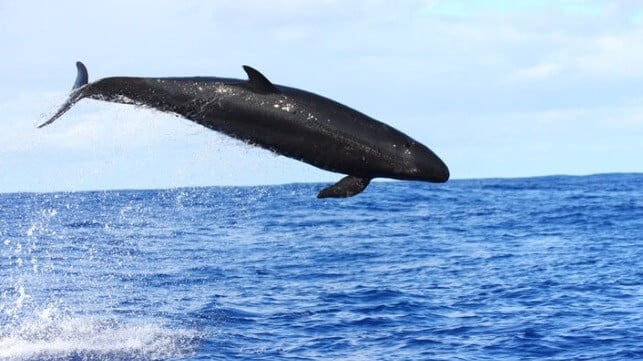Study: Hawaii's False Killer Whales Could be Heading for Extinction
But globally the species is in better shape

The Hawaiian population of the false killer whale is trending towards extinction, according to a new study in the journal Endangered Species Research.
The false killer whale is a large, sharp-toothed dolphin that hunts large fish like tuna and mahi-mahi. When first discovered, it was initially classified in the same genus as the killer whale because of the similarities of its skull and other factors. It is found off the coasts of every continent; world-wide, it is considered near-threatened, indicating relative abundance. The dolphins mature and breed comparatively slowly, and local populations can come under pressure - particularly as it has a habit of taking fish off hooks, a hazard to the dolphin and to longline fishermen's livelihoods.
A distinct, non-migrating population resides near Hawaii, and this subgroup was listed as endangered in 2012. At the time, the group numbered about 184 individuals, but (after considerable survey efforts and modelling) the researchers behind the new study calculated that by 2022, it was down to just 139 - a loss rate of about 3.5 percent per year.
Entanglement and hooking caused by interaction with Hawaii's near-shore commercial fisheries are a likely factor in the population's decline, according to the authors. "Analyses of photographs over the same period as our abundance and trend analyses reveal that over one-quarter of individuals from this population have evidence of surviving prior fisheries interactions," the researchers found. "While this method does not allow for an assessment of bycatch directly, it does reveal that depredation of bait or catch is widespread among the population and that hooking occurs regularly."
Relatively high levels of bioaccumulated PCBs in the dolphins' blubber and a tendency towards inbreeding in small social groups could also contribute to decline, the study found.
The extent of conflict with fisheries is hard to estimate, especially since small nearshore vessels don't have fisheries observers who could report on instances of bycatch, but the researchers believe that this is the primary cause of the shrinking population size. Since female false killer whales only have one calf every seven years on average, they do not rebound quickly from mortality, and conservation advocates warn that they could be headed for extinction if NOAA Fisheries doesn't take more active measures to protect them.
